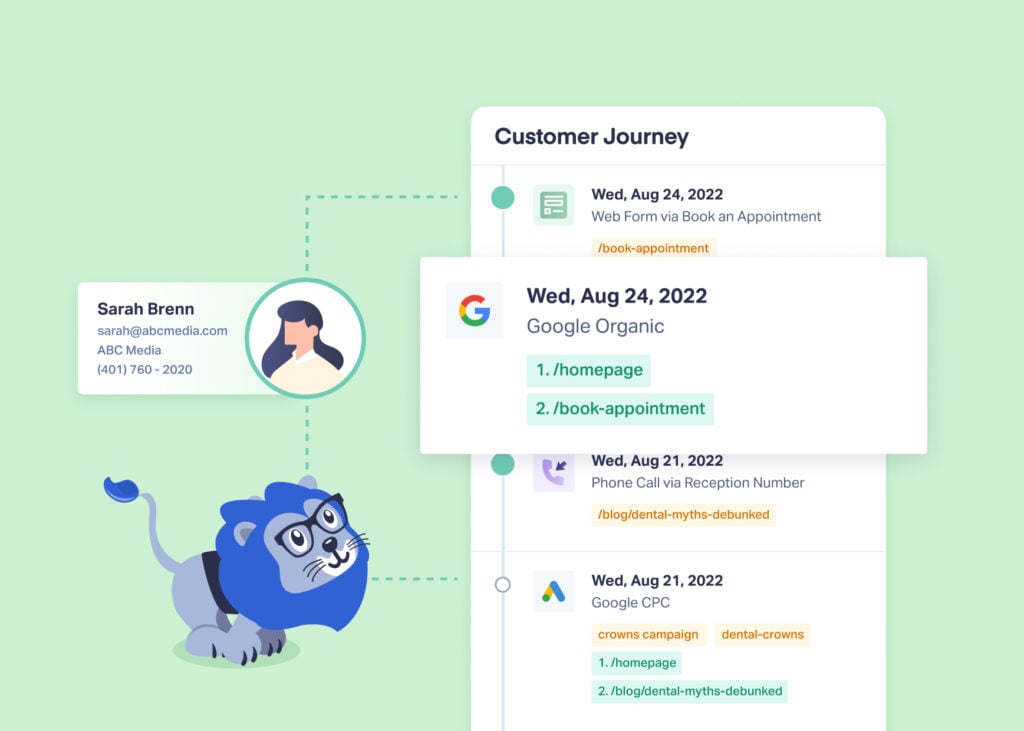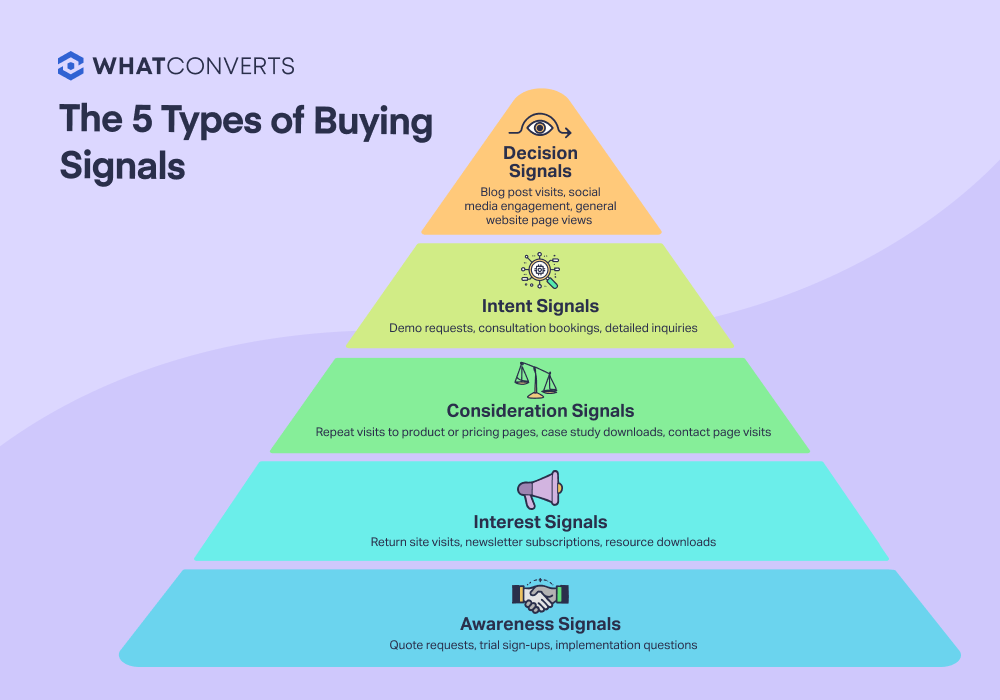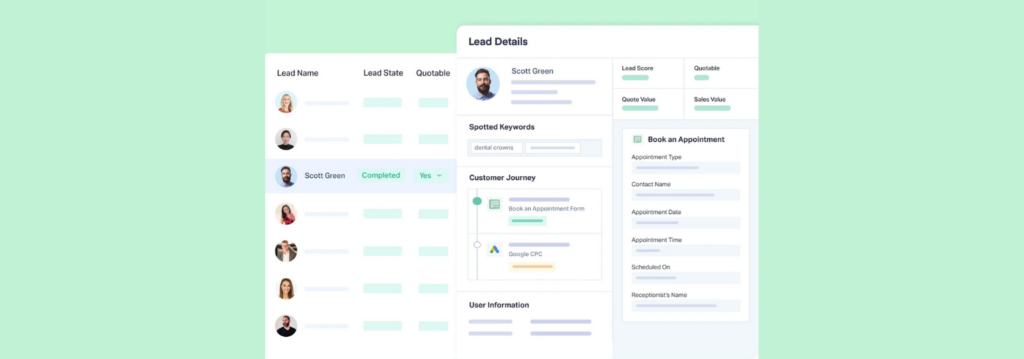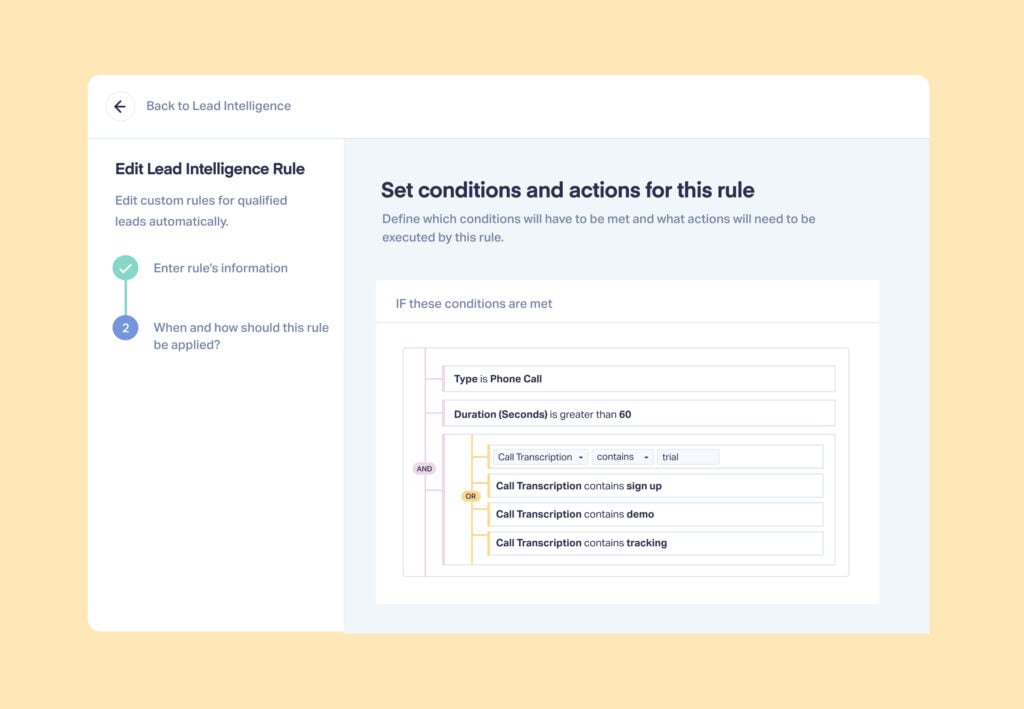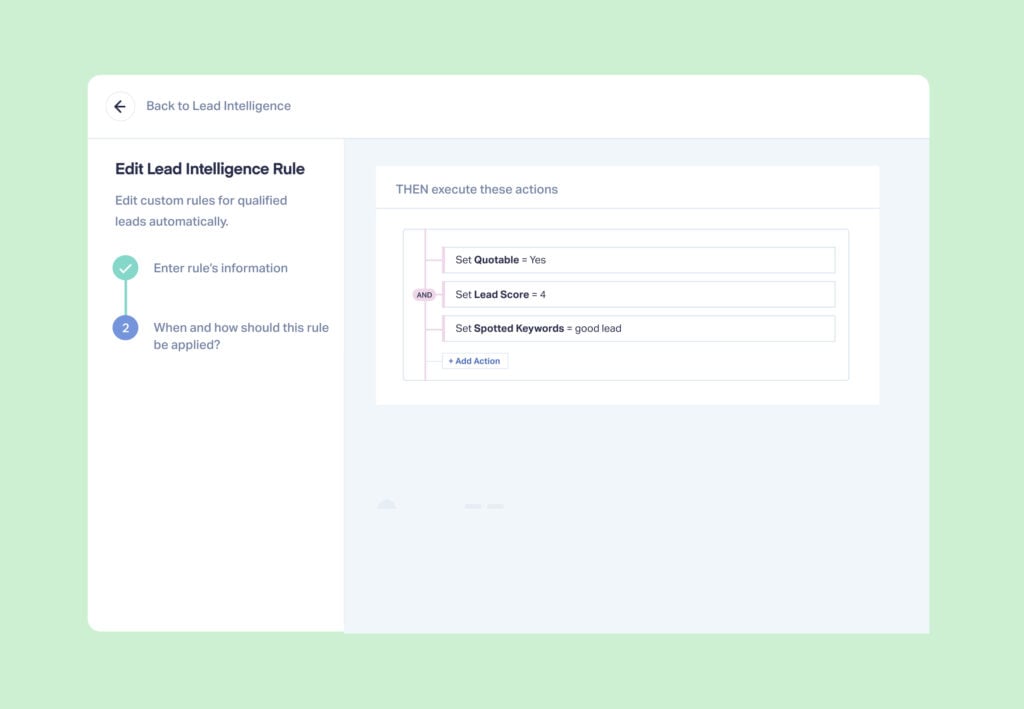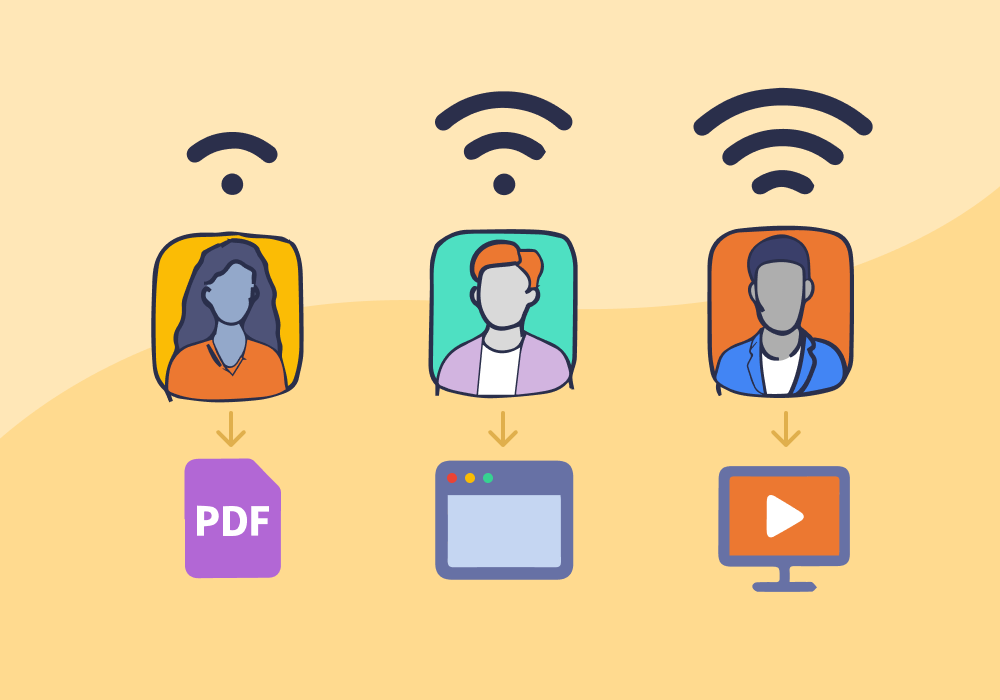
The marketing team celebrates 500 new leads this month—until they discover only 12 became customers. Sound familiar?
Most marketers optimize for lead volume when they should optimize for lead intent. Optimizing for volume causes:
- Wasted budgets
- Frustrated sales teams
- Unclear marketing performance
The leads pouring into your CRM aren't all created equal, and treating them like they are is costing you money.
You can transform your marketing ROI simply by creating a system to identify and prioritize leads based on the strength of their buying signals. Instead of chasing quantity, quality-focused lead tracking reveals which prospects are ready to buy, allowing you to allocate resources where they'll generate the highest return.
Why Lead Volume Misleads Marketers
Consider this scenario:
Over the past quarter, you’ve spent an equal amount of your ads budget on two campaigns. Campaign A generated 100 leads at $50 cost per lead, while Campaign B generated 20 leads at $250 cost per lead. At first glance, Campaign A appears more successful.
But if Campaign A's leads convert at 2% (2 customers) and Campaign B's leads convert at 15% (3 customers), Campaign B is the more successful customer generator, despite having the higher cost per lead and the lower total lead volume during this particular quarter.
In the next quarter, you’ll be better off allocating more of your budget to the campaign that generates customers at a 15% rate and cutting budget to the one only generating at 2%.
Buying Signals Can Predict Lead Outcomes
Understanding lead outcomes is illuminating, but it comes after the fact. Buying signals allow you to predict these outcomes and adjust your campaign efforts accordingly while the campaign is in progress.
For example, let’s say that, halfway through the quarter, you were able to assess exactly which visitors came from which campaigns and see all of the actions they took after their initial conversion. When you took a look at the numbers, you found that:
Campaign A’s 50 leads included:
- 30 leads who only visited the homepage
- 17 leads who downloaded a general industry report
- 3 leads who requested a demo of your product
Campaign B’s 10 leads included:
- 2 lead who only visited the landing page
- 6 leads who downloaded a customer case study
- 2 leads who requested a demo of your product
You’re only halfway through the quarter, and still have half of your budget to burn. You can see that Campaign B is generating leads with stronger buying signals at a higher rate than Campaign A; the problem is that Campaign B’s volume isn’t very high.
By allocating budget away from Campaign A and toward Campaign B, you can boost volume to the lead generator that’s on track to produce customers at a 10-20% rate rather than a 2-6% rate and increase your total customers generated by the end of the quarter, instead of waiting until after the quarter closes to make those adjustments.
Read More: The Quantity → Quality Shift: Agency Boosts Quality Calls & Conversion Rates by 30% [Case Study]
How WhatConverts Makes Buying Signal Optimization Possible (and Easy)
WhatConverts allows you to make these exact adjustments by capturing and connecting every touchpoint in your leads' journeys. When someone clicks your ad, calls your business, visits multiple pages, and then submits a contact form, the platform tracks all these interactions as a single lead profile rather than isolated events. This unified view reveals the buying signals behind each campaign's performance.
Based on each lead’s buying signals, you can manually or automatically sort them into “qualified” and “unqualified” categories, then measure your campaigns and keywords based on how many qualified leads were generated. Put more money behind the campaigns driving high-intent leads, and then watch your ROI grow.
The 5 Levels of Buying Signal Intensity
It would be nice if every lead came with a neon sign proclaiming their intent to buy, but real buying signals tend to require a bit of interpretation. Understanding the relative strength of different signals will help you allocate your resources toward generating high-priority, high-intent leads.
Level 1: Awareness Signals
Awareness signals represent the top of the funnel. These include blog post reads, social media engagement, and general website visits. While these signals indicate low intent, they're important for building awareness and nurturing long-term pipelines. A prospect reading your blog about industry trends isn't ready to buy today, but they're beginning their research journey.
Level 2: Interest Signals
Interest signals show moderate engagement. Multiple page visits, resource downloads, and email subscriptions demonstrate that prospects are moving beyond casual browsing. They might just be developing an affinity for your brand and your content without any conscious desire to make a purchase. That’s still valuable—they’re investing time in consuming your content, giving you the opportunity to put your products, solutions, and value propositions in front of an engaged audience that has the potential to be swayed.
Level 3: Consideration Signals
Consideration signals demonstrate active evaluation. Pricing page visits, feature comparisons, and competitor research indicate that prospects are convinced that your offerings have value; now they’re evaluating whether that value is worth the cost to them, given their specific needs and circumstances. They've moved from either "I'm content with the status quo" to "There might be a better way" or from "I have a problem" to "I need a solution." This is where sales teams would classify leads as "warm" and marketing teams should provide sales enablement content, detailed case studies, and more direct engagement opportunities.
Level 4: Intent Signals
Intent signals demonstrate high purchase likelihood and readiness for direct engagement. Demo requests, consultation bookings, and detailed product inquiries show prospects have moved beyond research and now want to understand specifically how your solution addresses their needs. They're no longer asking "What does this do?" but rather "How will this work for us?" They’ve transitioned from passive evaluation to active engagement, signaling they're prepared to invest time in serious conversations about implementation, pricing, and next steps.
Level 5: Decision Signals
Decision signals represent the highest intent and immediate purchase readiness. Quote requests, trial signups, and specific implementation questions indicate prospects have completed their evaluation process and are choosing between final options. These prospects have likely secured budget approval, identified decision-makers, and established timelines. They require immediate, executive-level attention because any delays risk losing them to competitors or internal inaction during this critical decision window.
Building Your Buying Signal Detection System
At first, much of this might seem simple—of course you can recognize that someone who says “I’m ready to get started” is closer to making a purchase than someone who’s casually browsing your website. The problem is that manual signal recognition doesn’t scale. It’s also prone to human error and inconsistency, making it an insufficient solution for buying signal detection.
Building an automated system for identifying and responding to buying signals ensures no high-intent prospect falls through the cracks while efficiently managing lower-intent leads.
Signal Collection with Comprehensive Lead Tracking
Before you can interpret and act on a lead’s buying signals, you need to capture the signal data and document it on a lead-by-lead basis. Viewing conversions as anonymous aggregate data won’t work. You need to be able to see that a specific ad click, a particular form fill, an individual page visit, and a resulting phone call are all attached to the same person in order to recognize that this lead is demonstrating escalating buying signals—and you need to have access to that individualized data across your entire database of leads and conversions.
WhatConverts is the only lead tracking platform that can solve this problem and track the entire customer journey across channels and mediums back to each individual lead. It uses a single tracking script to capture over 70 data points across all conversion types—calls, forms, chats, and website behavior—and connects these touchpoints to individual leads, creating comprehensive profiles that reveal intent patterns rather than just individual actions.
Lead Scoring Based on Data-Backed Pattern Recognition
When you’re able to see conversion actions on an individual lead basis, you can get insights and analyze patterns that would be impossible to find otherwise. You might find that visitors who download case studies are twice as likely to request demos than those who download whitepapers, or that leads who convert via certain ad keywords are more likely to become customers than those who originally discovered you via others.
This information allows you to develop a buying signal hierarchy that’s specific to your actual customers and conversion actions, and then build a lead scoring system that’s backed by empirical evidence.
WhatConverts automates this process using Lead Intelligence rules. For example, you can create rules like "if a lead clicks on a Google Ad with X keyword and makes a call that lasts longer than 30 seconds, assign them a lead score of 50."
You can also customize lead scoring based on the specific product or service by assigning quote values, like "if the lead mentions 'dental crowns' in the call transcript, assign them a quote value of $750."
Automatic Action Sequences Based on Lead Scores
A lead who hits 75 points from high-intent signals needs immediate sales attention, not a spot in next week's email nurture sequence. Meanwhile, a 15-point lead with awareness-level signals belongs in educational workflows designed to build interest over time.
WhatConverts automates these responses based on your scoring thresholds. High-scoring leads send webhooks to trigger alerts in your sales tools and Slack. Spam leads are blocked from cluttering up your sales pipeline. This systematic approach ensures every lead receives the right level of attention at the right time, maximizing both conversion rates and team efficiency.
The Key to Lead Generation: Quality Over Quantity
Marketing success comes from identifying and nurturing high-intent buying signals, not maximizing lead volume. This shift from quantity to quality transforms how you allocate budgets, measure success, and interact with prospects.
The companies winning in today's competitive landscape aren't those generating the most leads—they're the ones that are most effectively identifying and responding to buying intent. They understand that a single high-intent prospect is worth more than dozens of low-intent leads.
Start by defining your buying signal hierarchy and implementing systems to capture and score these signals automatically. As you gather data about which signals predict success, refine your approach and scale what works.
Quality-focused lead tracking transforms marketing from a volume game into a precision instrument for identifying ready-to-buy prospects. When you can prove that your marketing delivers qualified, high-intent leads that convert into revenue, you'll never worry about lead volume again.
Ready to start chasing true high-intent leads? Start a free trial of WhatConverts today and watch your next intent signal arrive in real time.
Get a FREE presentation of WhatConverts
One of our marketing experts will give you a full presentation of how WhatConverts can help you grow your business.
Schedule a Demo
Grow your business with WhatConverts






